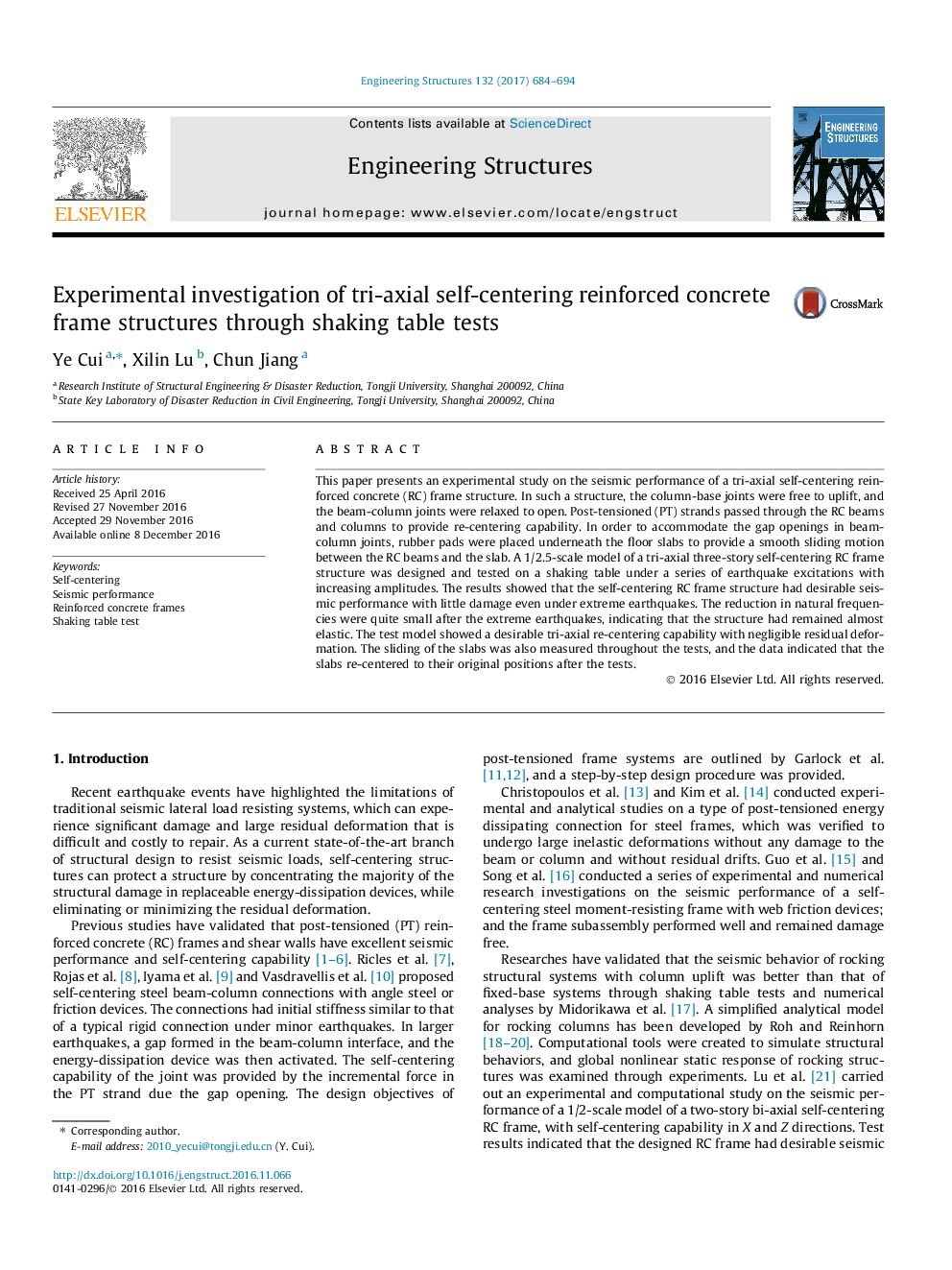| Article ID | Journal | Published Year | Pages | File Type |
|---|---|---|---|---|
| 4920466 | Engineering Structures | 2017 | 11 Pages |
â¢Introduction of a novel tri-axial self-centering structure system.â¢A 1/2.5-scale tri-axial self-centering RC frame was tested on a shaking table.â¢The test structure had desirable seismic performance with little damage.â¢The test model showed a re-centering capability with little residual deformation.
This paper presents an experimental study on the seismic performance of a tri-axial self-centering reinforced concrete (RC) frame structure. In such a structure, the column-base joints were free to uplift, and the beam-column joints were relaxed to open. Post-tensioned (PT) strands passed through the RC beams and columns to provide re-centering capability. In order to accommodate the gap openings in beam-column joints, rubber pads were placed underneath the floor slabs to provide a smooth sliding motion between the RC beams and the slab. A 1/2.5-scale model of a tri-axial three-story self-centering RC frame structure was designed and tested on a shaking table under a series of earthquake excitations with increasing amplitudes. The results showed that the self-centering RC frame structure had desirable seismic performance with little damage even under extreme earthquakes. The reduction in natural frequencies were quite small after the extreme earthquakes, indicating that the structure had remained almost elastic. The test model showed a desirable tri-axial re-centering capability with negligible residual deformation. The sliding of the slabs was also measured throughout the tests, and the data indicated that the slabs re-centered to their original positions after the tests.
